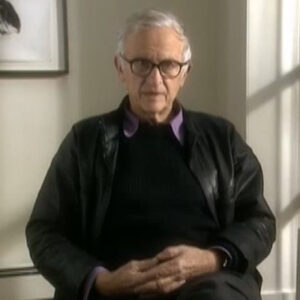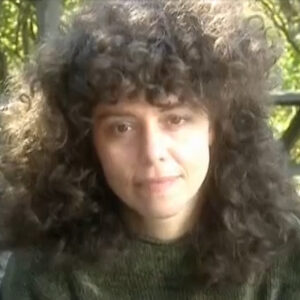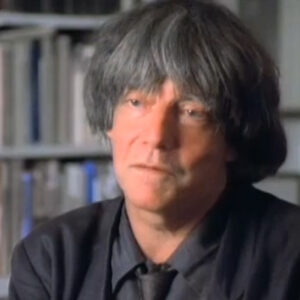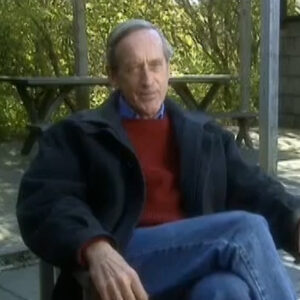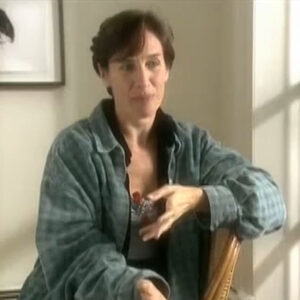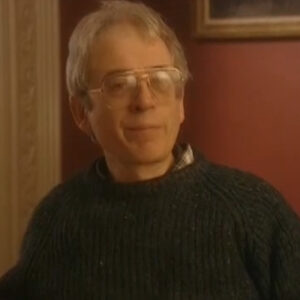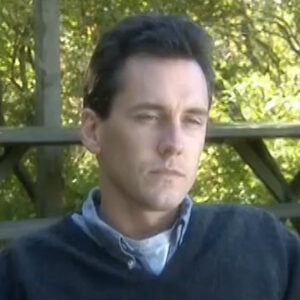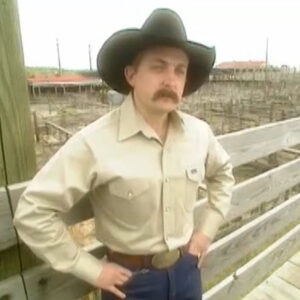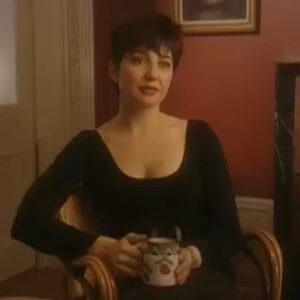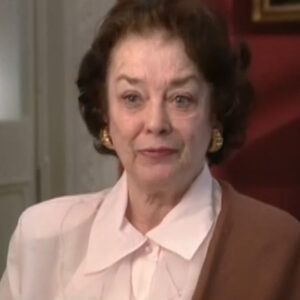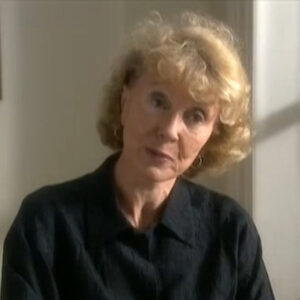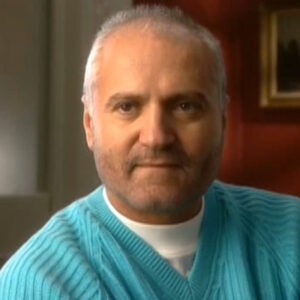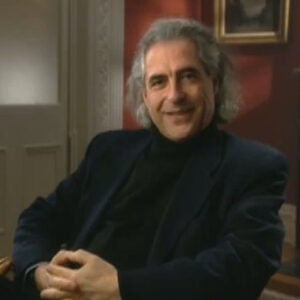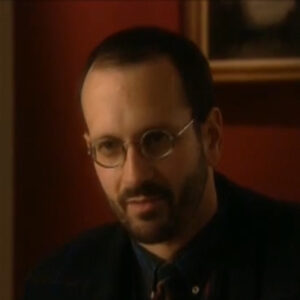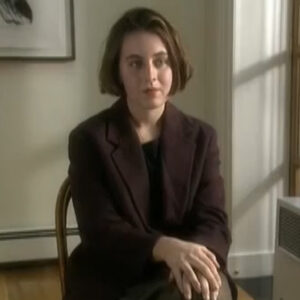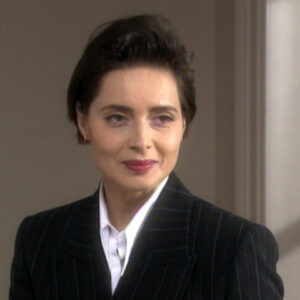Speaker I’m an accountant and office manager for an investment banking firm and to be as a hobby. Enjoy, honey, enjoy working with nature and the honeybee. I got involved in this Avidan project by reading the American Bee Journal and gleanings to national publications. And I always read the ads first before I get into the real seriousness of the articles. And after reading this particular ad, I says, Oh, that sounds kind of interesting and I almost know it by heart. It says A wanted man or woman to be photographed by bees, by a world famous photographer. Send a Polaroid picture of yourself to Laura Wilson down in Dallas, Texas. That was the first month. The second month. The third month at the fourth month. I said, gee, they still haven’t found anybody. Maybe I’ve got a chance at it. So I went to work and I was working at the bank at the time and the administrative assistant took a Polaroid picture of myself in a three piece suit.
Speaker Send it off to Texas and within about a week. I got a phone call saying, are you still interested in doing this? And I said, well, I probably wouldn’t have answered it if I wasn’t. And I thought it was, you know, almost kind of like a joke type of thing. And I said, sure, I’m still interested. And they said, Do you really know who Richard Avedon is? And I’ll be quite honest with you, at that time, I did not know. And so they exploit Alora. I explain the whole situation to me. And after I got off the phone, I explained to my sister and my mother what this was all about. And my sister’s comment was, why would Richard Avedon want to take a picture of you? So we went ahead and we made some connections. We were going to do some shooting, was going to be in one of my big yards. I had needed some help with this. And they recommended the entomologist, the Dr. Gary, out in University, California. And after several phone calls on. From the evidence staff to him and to me, we finally agreed on a time and a place where this photograph would be taken. They flew me out to California. I have always been a resident of Illinois. I’ve lived in the Chicago land area all of my life. And so they sent me out to California for this particular shoot. And that was the beginning of the whole. The rest is all history. We did the shoot. I arrived on a Friday afternoon and they wanted me to stay for two days for the two or three days because I didn’t know how long it was going to take. And so I took a vacation. On the other end of the weekend, just briefly talked on Friday night with his staff and and that was it. It was a late got in late and got some sleep. The next morning I had breakfast with Richard Avedon, Laura Wilson and his camera people, and he discussed what he was doing out West. We did not discuss anything about the B picture. What he was doing, how he was doing it, why he was doing it. You wanted to know what kind of clues I had, particularly what kind of pants I had. And so we had to go back to the motel room and check out. I had three different kinds of pants. Check that out. And picked on a pair of khaki pants and went out to the shoot, which was out on, I believe, a tomato farm just outside of Davis, California. As we drove in, we saw or I saw these package beads. Now they ship these honeybees through the mail and they come in two or three pound packages. Package bees are normally older bees and have stingers. Whenever you do a bee picture, you usually use young bees that have no stingers. So I can still remember going past and under the trees, all these packages of bees. And I said, oh my God, they’re package bees. And Dr. Gary said, don’t worry. Everything’s under control. So after I got over that initial shock at that time, I still do not know what the what the bee picture was going to be. After that, we got onto the shooting site and they put the white backdrop on the barn and they said, okay, now take off your shirt. So I said, oh, OK. So I took off my shirt and I still had my t shirt on underneath. And I said that shirt, too. At which point he said, OK, what’s going on? You know what? What are we gonna be doing? At that point? I was bare chested. And and then they explained to me what was gonna be done. Dr. Gary had the Queen Fair Mon, which is an order that the queen gives off that gives each honeybee colony a distinctive odor so that the bees do not go between two different hives. It was in a little vial and a small vial and it was in five different cans. The last one being a gallon can. They said if this spills out, it’s all over. Mimosa, pack up and come back some other week. So they put a few drops of this ferryman on my chest, a few drops on my head. And they stood me up against the. Near the barn with the white backdrop off to the side, several hundred yards away, they went and dumped some of these package bees onto the piece of plywood that had been coated or some sugar water had been dumped on there. And what honeybees did then was suck up the sugar water. And when they have a full honey stomach, they cannot sting. It’s great. It still could sting, but, you know, not as likely. Then they took a broom and swept them in the washer into a scoop and threw the scoop of bees into the air. This was several hundred yards away. The bees took flight. Sort of like a big black cloud using your imagination a little bit. But but there were hundreds, perhaps a couple thousand bees.
Speaker I’m sorry, Mr..
Speaker So so they they swept the bees into a scoop and threw the scoop of bees into the air, several hundred, several thousand depending at the time of when they were doing this. And the bees took to the air, forming a black cloud, so to speak. And then they picked up the pheromones, the smell. You could not smell the human being, could not smell it, but the bees could. And they picked up on it and immediately started landing on my chest. There is a humming allow a large loud humming that was came along with that and they started landing on my chest. Someone before hid at various times. Richard Haverton said, Now remember, you can’t move because any movement will be a blur, at which point my knees were starting to shake a little bit. And I said, well, how am I going to overcome that? And I just sort of locked my knees in an.
Speaker Hopefully I didn’t move and I did not move. Well, it was really kind of funny because a honeybee has six legs and on the base of each leg is like two little fingers. So you’ve got 12 things on each bee. And if I had, like, the picture, the final picture that was used had anywhere from five to eight hundred bees on my chest. And you go five to eight hundred times twelve and you’ve got these little things walking all over your bare chest sort of makes you little uncomfortable, to say the least. And you just never knew what was what was going to happen. Dr. Gary did try to calm everybody down, saying that, you know, not too many, that nobody will get stung. But the we there we did get stung. Probably all of us got stung. I got stung several times during the shoot and a couple times after shoot.
Speaker Yes, what happened was as they were forming on me, that’s when the camera started clicking and several times they went in various places where they shouldn’t have gone. Sometimes that made a difference. Sometimes it didn’t. Like most, the one that was chosen, the bees were in my ear. I mean, my ear was loaded with with bees. And if you don’t think that tickles. They also started to form a mustache and Avidan said no mustache. And so as Dr. Gary went, the smoke, the bees to remove the mustache. Two of them got got me right under the right, under the lip. And when you get into an area like that where there is no or not much flesh, you could wind up with a very large lip. And I said, oh, we’ll be here all next week because it’ll take several days to get the swelling down. But I could not say anything because if I open my mouth, bees would fly in and they and they normally go for dark, dark, dark areas because the beehive is dark. And so I made some kind of a noise. And Dr. Gary knew immediately by watching the bees and the movement of the bees that I had been stung. He then smoked the area good because smoke calms the bees down and got the bees out of the mustache form. Used a car. Don’t stiff card to scrape the bees stingers out the two stingers that were there. And when he used the smoke caused my eyes to water. And therefore then I had tears coming down my my face not because of the bees things, but because of the smoke. At that same time, the camera had run out of film. So the camera crew was changing the film and they really didn’t know, I believe, what really had happened because Dr. Gary had wiped the tears off with the Kleenex. And we were back in I got my composure back and they were back ready to shoot.
Speaker I was ready when they were ready to when he reloaded the camera. So that was quite an experience.
Speaker Describe summarize your feelings were hearing.
Speaker Well, the initial we had no idea how long it was going to take because I had no idea what what type of a picture. The end result was going to be. And so we shot for the first day for roughly an hour. And I had about a ten minute break, probably less than that, only on my part, because I said, let’s cut cut the break, because I had been stung twice in the back just by a beat, some bees flying by, you know, and it just irritated him or whatever. I mean, we weren’t doing anything. And I said there’s no sense in making it even worse. So let’s just go back and I’ll I’ll I’ll do it again. So we shot for roughly an hour, maybe a little bit more than that, thinking that we were all through for the debt, for the whole shoot, at which point we got all through. And he said, well, let’s Richard have it done, said let’s let’s do it all again tomorrow. And he said, oh, my gosh, you know, can I can I survive this whole ordeal? And later, talking with Dr. Gary.
Speaker He said, I think the picture that’s gonna be used, this was done on Saturday. He says, I could tell by Richard Abbadon expression that he got really what he wanted. And but just as an insurance measure, in case something went wrong with the film or whatever, we did it all again. The same thing again on Saturday. On Sunday, I’m sorry. And. And that lasted for roughly half an hour. After the shoot for about a week and a half, two weeks later, I received the call at the bank and unfortunately I was not at my desk when Richard Avidan did call me. But Laura Wilson called me a little bit later and thanked me for participating in the in the shoot and said that there was really I was two pictures that they would like to use instead of the one. One was a Buddhist point of view and one was a Christian point of view. And she explained that a little bit. And that was that. And and after talking with her, I said, well, that this has to be about the highlight of my beekeeping activities, because at that particular time in 1981, I was president of the state association. I had also been president of the Local Beekeepers Association. I had exhibited some honey at the Illinois State Fair and a raffle. They auctioned it off and it went up until just a couple of years ago, held the highest price that it was ever sold. Three, two and a half pound junctures went for six hundred dollars. And I just started a new job. So, I mean, I had done all this things and in eighty one and I said this had to be about the highlight of my beekeeping activities. And she said, no, just wait. Well, I first, as well as we left on on Sunday after the shoot. Richard Avidan told me when the approximate time that it was going to be out, that it was going to be exhibited at the Aymond Carter Museum in Texas. And I said, well, if you’d let me know in advance, he said, I would like you to be there. And I said, well, if you let me know in advance, I will play my vacation, hold some time open. And I would be more than happy. You would be a great pleasure to be down there. Participate in the opening. I was selling hunting at the local farmer’s market, which I’ve been a grower and seller there for many years. And one of my honey customers came up and said, boy, you made the big time. Now, I knew that the opening was gonna be at the Aymond Carter Museum, but I did not know that it was gonna be in the Texas Monthly magazine. And one of our local Oak Park residents came down to the market specifically to give me a copy of the Texas Monthly, of which point my picture was one of several that were showing.
Speaker This summarizes briefly a paragraph. What kind of.
Speaker Well, when the first exhibit when the exhibit first came out, of course, it was it. It toured the United States. It was in Chicago for two and a half months. It’d be surprising. I’d be riding public transportation and people would look at me and they didn’t know how to say it or what to do. And they come up and they you know, finally, as before I was getting off, they said the Senate. Was that by you? By chance, you are in the Art Institute. And I said yes. And there’ll be other times at the farmer’s market, I would get people who would have guests visiting them and they would specifically come down to the farmer’s market to meet the Beamon. It was kind of interesting because in the local farmer’s market, I’m known as the honey man. But for the Avidan picture, I’m known as the bee man. And I’ve also had some radio coverage and the local station has picked me up. And whenever they go to introduce me, they always talk. A little bit anyway, about the Abbadon exhibit that was shown at the Art Institute and that has been around in just about all of the magazines lately.
Speaker And what’s kind of interesting is the older the picture gets, the more publicity. Of course, with the Avidan autobiography and with his evidence book. So it’s becoming the older it gets, the more the more publicity it is getting. And it’s surprising. I never know where I’m going to go. And somebody is going to say, I know you from somewhere, but I don’t know where. And our company was recently sold and the people came in from Minneapolis and they said, you know, we know you from somewhere, but I’ve never seen you. And then when they see a picture in my office, they’ll say, Oh, I’ve seen that picture before. I really like it.
Speaker And it’s quite interesting.
Speaker It’s kind of interesting how that came about. I had no idea at the time of this of this shooting that it would be that popular, that famous. Most people dislike BS and they’re afraid of it. And a swaddle. However, as a piece of art and with the BS on me of people take a different point of view, especially now when you separate the picture from in the American West series as opposed to the evidence book or the publicity in the in the magazines. Completely different. Kind of a negative point. In the end, the American West, the series, but in the in the current publicity, people have a more positive and they think it’s great. You know, that I was one of his subjects. So as far as being famous, it is quite interesting. Yeah. As everybody at work says and a few of my friends say, your 15 minutes has gone on forever. And no, what’s really something is the fact that this picture will go on forever. It’s going to outlive me and and go down in history.
Speaker There’s been a great, great photo.
Speaker I often. Yeah. Probably probably him. But it has.
Speaker I’ve often wondered what people see in that particular photograph. They are probably looking at the photograph and wondering what I am thinking.
Speaker And what they see in that and then in, you know, just how they view it, they’re wondering what, what what’s going on inside of me at that particular time. As far as changes. No changes, product put on a few pounds since then. But now that, you know, it was an interesting experience and something that I had always wanted to do with a big beard, not necessarily in an art design, not necessarily in a in a sort of real image.
Speaker Think about photography differently. The power of an image.
Speaker Well, I’ve always enjoyed photography, and I think that’s one of the reasons why I answered the ad. You know, it was a photographer of photography.
Speaker Ad for a photographer leading a beekeeper.
Speaker So I combined sort of a beekeeping and photography and whether or not, you know, I still go about my things the way I always did.
Speaker I think any more than I never know who’s going to see me and who’s going to recognize me and why they why they do that.
Speaker They’re just fascinating creatures. And what is, I think, interesting with this particular photograph is you brought a two really one on No. One. I was one on one. And the other was a creature that everybody feared. And it brought the two together for a fantastic photograph. Most people do not like these. Bees are honey bees are very important. Over a third of the food that we eat is pollinated by honeybees. And most people don’t realize that. They just think of the stings. They think of the negative points. So you have a negative attitude toward the bees.
Speaker For most people and basically they’re unknown. And here I’m an unknown. And they brought the two together and look at what happened.
Speaker I think mainly because they don’t really know about honeybees. And, uh. And how they are, you know, how the how the picture was perhaps a setup? Some people think that the negative part of fact is that it was a it was a setup. You know, you don’t normally beekeepers don’t walk around bare chested with bees walking on there on their chest. As a matter of fact, it’s quite, quite contrary. When you’re working with bees in in in bad weather or inclement weather, you wear a full white cover all outfit. You always wear a veil over your face, because if you get stung me around the round your face, you know, you’re uncomfortable. Not only that, you look funny and you could be a butt of all the jokes at work on Monday. So it’s just something that people can’t can’t get their hands on. It’s just a big question mark. And the fact that it was done just even more amazing.
Speaker What they would find it with those two different.
Speaker The two different photographs that were originally going to be used and then later one of them was dropped. One was a Christian, one was a Buddhist. I really don’t. They didn’t explain too much on that. As to. One was one was better than the other or what they were trying to do. They did mentioned that there was two and that of the different views.
Speaker But they really didn’t get into the into the view.
Speaker Well, you mentioned in one interview that you were aware of the controversy.
Speaker Well, a controversy, I think, that stemmed from in the American West.
Speaker Was the fact that he perhaps manipulated the subjects to a point that didn’t make him look too good. I don’t know. I sort of disagree a little bit with that. And even though mine was a staged photograph, I think it was a.
Speaker I don’t think mine you know, it didn’t bother me any. And it was kind of just the way the bees landed. So we didn’t really make it as a. It was staged, but it really wasn’t staged, you know what I mean? It was a natural and somewhat natural. As far as the people in the in the other exhibit at the opening, I shared many hours with several of the subjects, and they were just plain old people.
Speaker And they caught them or Avidan caught them in a, uh, in a state where they just were really what they really were, either a ranch hand or a snake. We couldn’t get the snakes type of thing.
Speaker They mentioned the last time you saw an exhibition that you’re always there. Was an exhibition. You want to be.
Speaker Yes, I was back in December. One of my coworkers was walking down Michigan Avenue in Chicago and saw a little sign on the bookstore that Richard Avidan was gonna be on a book signing for his autobiography. And so he told me about it. And so on Monday evening, I worked a little later and went over there. And you haven’t I did not know I was coming and I didn’t know I was gonna even be there either. And so we, uh, we met and saw his book and did some signings and had a little chat. And then he said, you’ve got to see this exhibit that’s coming up at the Whitney Museum of Art in March, I believe it was. And I said, well, if you let me noise, I said, maybe I can be there. And so, sure enough, it was about two weeks before the exhibit opened and I got this letter that they were having a private showing for his friends and guests. And so. So it wouldn’t be art for a Friday evening showing. And I was down below checking my coat. That’s the Friday you had all that snow, messy snow. And I was checking my coat. He was up on a landing a little bit. And he says, Ronald, you made it. And he was talking with the director of the Whitney Museum and turned to him. And he says, You hang Ronald’s picture in a gallery and he always shows up. And I thought that was pretty funny. I have been an opening in in the American West when I was in Madison, Wisconsin, and I had been the one in the Chicago area to.
Speaker Oh, yes, a lot of times people come into work and they, uh, people outside of my office and they’ve seen a picture before and they sort of get distracted and want to talk about the picture instead of really what I’ve got to really what I want to do. And so I sort of have to limit it. And even at the farmer’s market, where people bring their guests and visitors basically not only to see this farmer’s market, but also see, uh, see me in person.
Speaker And I do have a, uh, one of the pictures that was in The New York Times or one of the other publications posted in the back. And so people can see the big, uh, the big newspaper size and or the poster size picture. And, um, so I sort of have to limit what I can get carried away on this whole deal, because I. I sure can tell. I like to talk.
Speaker If you the to talk that you, Ronald Fisher, not.
Speaker Now, because, you know, I can cut it off any I like just, you know, I just have to say, well, let’s get down to business. Let’s talk about something else.
Speaker But it always intrigues people to meet somebody who, uh, who they think is famous, uh, you know, by a famous photographer. And they can’t believe that. You know, I’m just a regular old Parker. That was it was picked out of 250 to 300 photographs to be Richard Evidence man. Yeah, I would say quite a bit. As a matter of fact, as the picture gets older, it’s getting bigger. Like I say, it’s going to outlive me. Go on long after I’m gone and be quite interesting.
Speaker Well, immortality, it’s just it’s just going to go on. It’s as I think have done even said he’s as, uh, you’ve, uh, you’ve been immortalized in, uh and and you’re you’re helping me, uh, do the same.
Speaker I do it by posing for that particular picture.


